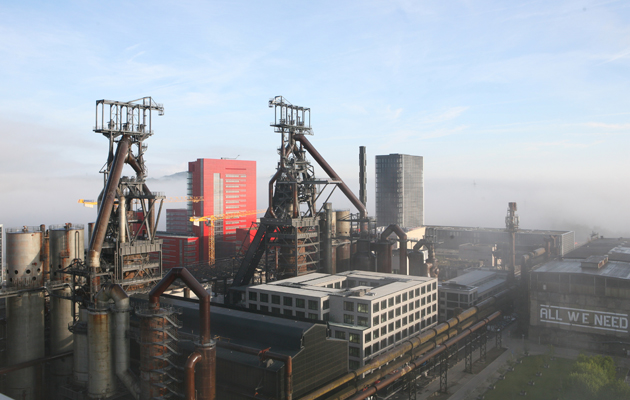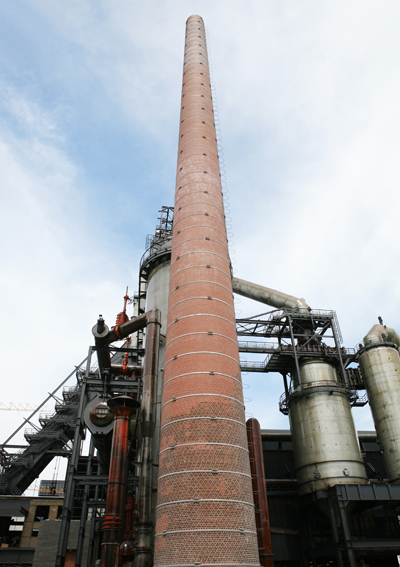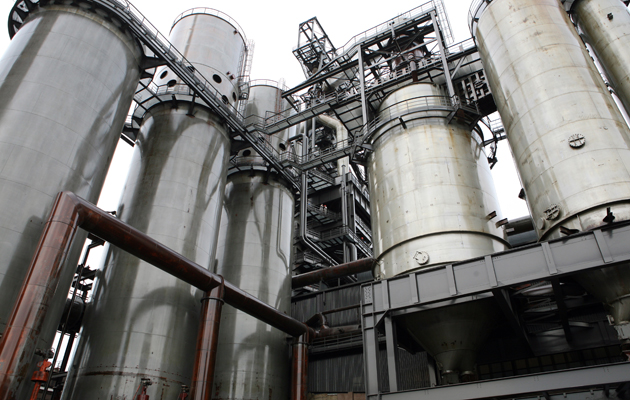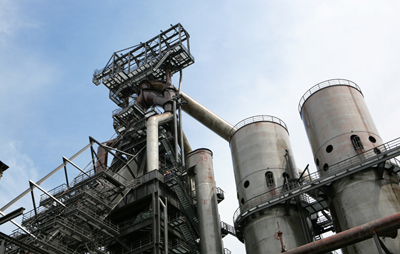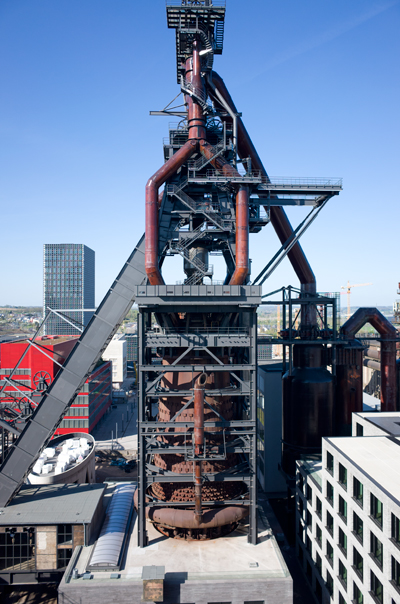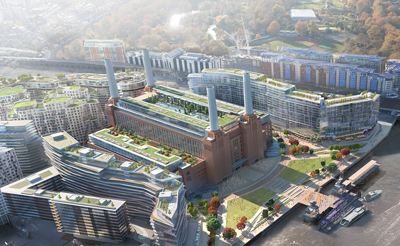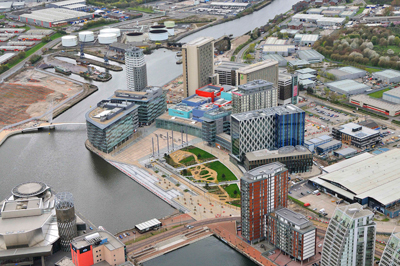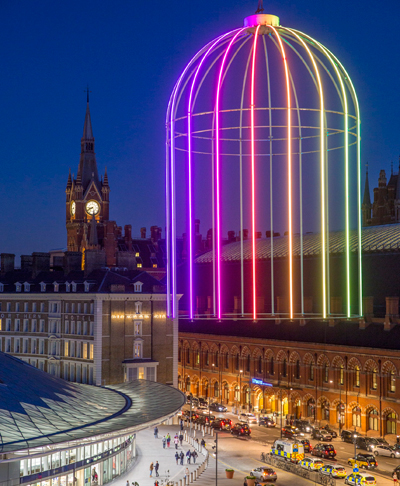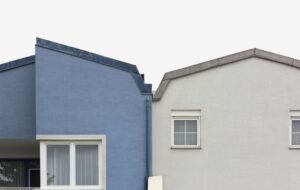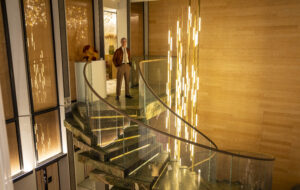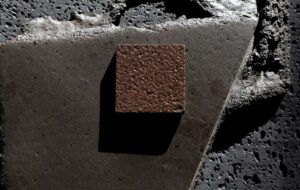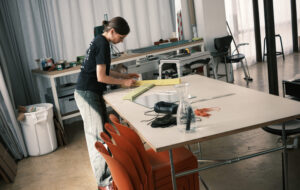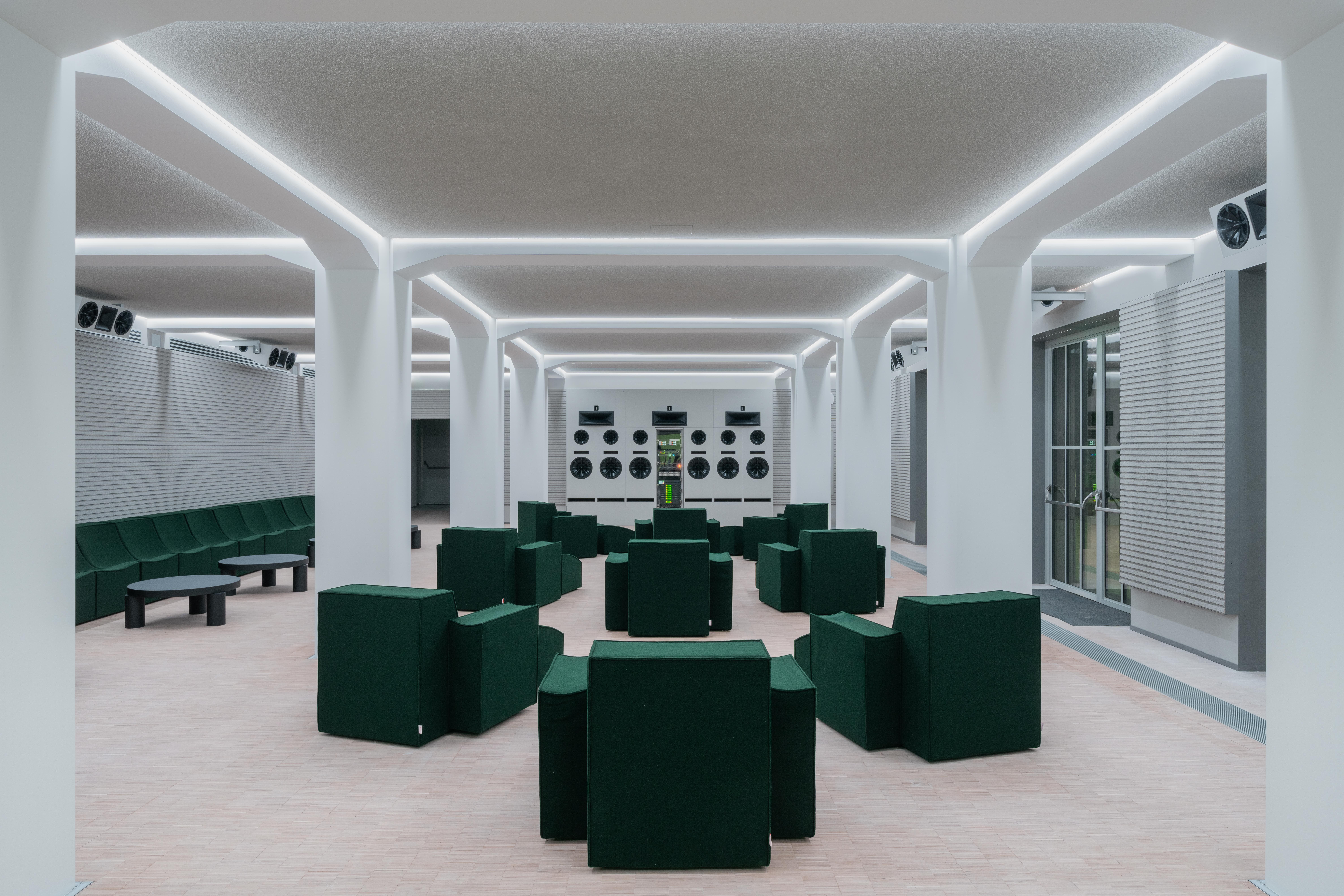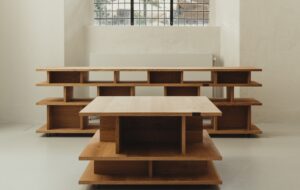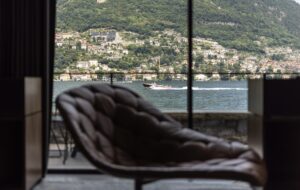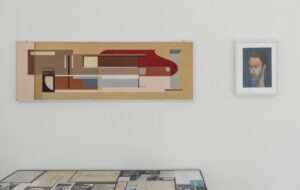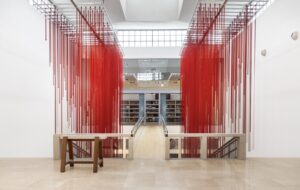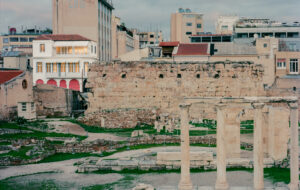|
|
||
|
As the development of a former steel production district in Luxembourg into a business and cultural hub nears completion, Peter Maxwell reflects on previous efforts to regenerate industrial sites, arguing that human and creative engagement is more crucial to the success of such projects than token references to an area’s history With a population of just 31,000, Esch-sur-Alzette is still the second biggest city in the diminutive country of Luxembourg. From September 2015, however, the area will see a relative population explosion, as the €800 million government redevelopment of the adjacent Belval industrial complex into a research, business and culture hub reaches a major milestone. Esch originally achieved its status as second city because it marks the point where one of Western Europe’s richest iron ore deposits shades across the border from France. Though the vast majority of this resource is located in foreign territory – mostly south in Lorraine or east in Germany – when it meets the low hills surrounding Esch, the mineral rises especially close to the surface, staining the soil ochre and making the extraction of the ore simpler.
A few key elements of the infrastructure have been retained on site Iron and steel-making has been big business in the south of Luxembourg since the middle of the 19th century. Production mushroomed with the creation of the Arbed conglomerate in 1911, combining the resources of three of the most significant local manufacturers, including the basis of the site at Belval. After the fluctuations in output caused by two world wars, the stability of the period between 1945 and 1975 saw annual national steel production surge from less than one million to more than six million tons, with Arbed the core contributor. However the oil crisis of the mid-1970s, combined with global overproduction of steel, largely derailed the industry; national steel manufacturers, by far the country’s biggest employer, were forced to shed thousands of jobs, devastating communities that relied on facilities such as Belval for work. Despite all this, Esch is still partly a company town. Arbed survived thanks to a number of international mergers, the last with multinational giant Mittal. ArcelorMittal, the world’s largest steel producer, still operates a small facility at the eastern edge of the Belval site, though now it processes scrap metal rather than raw material and uses diminutive modern electric furnaces rather than their towering coke-fired predecessors. Two of the latter do remain, by far the highest points on the skyline, but their purpose has become somewhat more abstract: to provide the centerpiece to a new a mixed-use development that hopes to replace heavy industry with innovation and recreation. |
Words Peter Maxwell
Images: Le Fonds Belval |
|
|
||
|
All the infrastructure is covered in a high-gloss resin |
||
|
The Blast Furnace Terrace, as the area around it has been titled, combines leisure, retail and office facilities with some residential accommodation. It also includes buildings that will compromise a new HQ for the University of Luxembourg, whose inflowing students and staff – 7,000 and 3,000 respectively once at full strength – will, come September, radically alter the size and character of the local population. This is merely the core of a wider 120-hectare scheme, which takes in a sizeable business district, heavily landscaped park and two residential quarters edging on to Esch proper. The furnaces themselves, which apart from a few ancillary buildings are the only vestiges of the site’s previous use, have been transformed into a tourist attraction. Blast furnace B, the last in operation when it was shutdown in 1997, has been partially dismantled in order to amplify the sculptural qualities of its filigree pipework and vertical massing. Beneath, a ring of cafés and restaurants will open out onto a plaza that runs between it and its brother, with one side demarcated by the as-yet-unbuilt university library, occupying the long shed from which the furnaces were once supplied. Blast furnace A has been left intact, now augmented with a series of publicly-accessible platforms and stairs that allow visitors to get up close to this monumental piece of hardware, winding around its stack before arriving at a vertiginous viewing gallery. A melodramatic lighting concept by Ingo Maurer ensures the structures become even more impactful after nightfall.
The blast furnaces are the highest points on the skyline The chance to clamber across such a complex machine is a joy for anyone who fantasies about breaking into manufacturing complexes to marvel at modern industry’s feats of engineering. But up-close the uncanniness of the furnaces is revealed. These are far from the “ruin porn” one might predict – everything here is in its right place, put there after having apparently been spotlessly cleaned. This initial subversion of expectation is reasserted when you notice the lack of discernable smell. Standing on the viewing platform you are high enough to hear to sounds of the still operational plant to the east, and realise that the furnaces now have that particular silence of things that were once unbearably loud. This sense of embalmment is encapsulated by the use of resin – in some places coloured, in others transparent – that covers the structure in a thick gummy gloss. This act of preservation is entirely practical, but also acts as an metaphor for the difficulty of establishing any sort of authentic connection between the future inhabitants of this pristine new enclave and its grubby, chaotic past. The justification for this treatment is the desire to involve the furnaces at a “conceptual, cultural and semantic level”, but this attempt to use these structures to predefine meaning is undoubtedly the most problematic aspect of Belval’s programme. There are unhappy precedents for this sort of approach scattered across Europe, not least in Britain. The UK has an abundance of brownfield sites, the redevelopment of which continue to offer some of the best opportunities for addressing the commercial, cultural or residential deficiencies that afflict its metropolises. As it has proved, they also provide chances to discredit their immediate socioeconomic history, along with any chance of imagining an appropriate means to supersede it.
Furnace B, which will be surrounded by a ring of cafés and restaurants The mothballed industries these spaces used to house, which once defined the life rhythms of their local communities, remain somehow incumbent upon our battered notion of a national identity. Honouring their legacy, in architectural terms at least, is a commitment common to both private developers and state agencies, though more often the tactics deployed feel like a marketing strategy targeted at incomers, rather than an act of continuity performed for the sake of any existing population. Most often, a portion of industrial hardware is left visible to add an easily legible graphic marker, isolated signifiers that carry the heavy job of tying what are usually culturally fungible building projects, defined by the parameters of extracting surplus value from capital, to an area to which they have otherwise become largely indifferent. These demarcate and legitimate just enough to beautify a brochure, but as actors within the urban field they have only the most insipid benefit to a community. One thinks of the loading cranes at West India Quay in London’s Docklands, thoroughly neutralised by black paint and with their arms pointed skyward in imitation of the towering financial centres at Canary Wharf behind. In a few years’ time the chimneystacks rising from Battersea Power Station will have their association with their surroundings similarly thinned by the fungal growth of apartments that have consumed its body, within and without, as part of its new role as safety deposit box.
The masterplan for Battersea Power Station Perhaps most comparable to the situation at Belval is the BBC’s 2004 decision to move a large portion of its operation to the Salford Quays in Manchester, occupying the last undeveloped portion of the Manchester Docks (joined there, coincidently, by a new outpost of the local university). This was similarly driven by a need for decentralisation from a capital city whose service economy was suffocating its smaller, post-industrial siblings. Like Belval too, these admirable intentions were rendered in European business park bland that eradicated any sense of genius loci attached to what was once one of the most important industrial centers in the world. The retention of two moribund docking cranes now acts more as an indication of how extreme the break with the past has been, rather than any emotional linkage; ironically for a site that now houses a major portion of the British Broadcasting Corporation, a visit to Salford Quays has become such an anodyne experience that the quarter feels almost stateless.
MediaCity in Salford Not that there haven’t been some victories amongst the defeats. The most obvious example is the universally lauded regeneration of the hinterlands behind London’s King’s Cross station. What were previously marshaling yards and coal drops are being transformed into a mixed-used development centered on culture, education and media. Yes, the bonus of having an attractively repurposed Victorian stock-brick warehouse as its focus is helpful in enlivening the area, as are its associated canal and the art students it houses. But the fact remains that a lot might have conspired against the success of this revivification, featuring as it does large amounts of well-detailed but ultimately boilerplate office buildings and some rather expensive flats. It has its own vestigial icon too of course, the beautifully wrought frame of a gasometer that will eventually form the focus of a waterside park. It is arguably neither the retention of old nor insertion of new architectures that have made this location a success, but the human strategies that have been employed alongside them in terms of selecting the right tenants, promoting events and festivals and, most importantly, giving artists license to intervene.
Identified Flying Object by Jacques Rival at King’s Cross However sensitive the treatment, the truth remains that masterplanning on this scale has one consistent flaw – every inch accounted for, they are divvied up so as to best please pre-existing stakeholders, and therefore largely unable to supply the sort of undefined space that allows a populous create its own relationship to a site. Communities aren’t mandated but appear organically, requiring an amount of indeterminacy, some slack in the waistband, to develop. In recognition of this a new, though largely undefined, discipline has established itself over the last decade – the ambiguously titled “placemaking”. One conciliatory practice that has found particular popularity with placemakers is to allow artists to mediate on the public’s behalf, adding a little uncertainty to the plan and tweaking the nose of the developmental dictatorship. Artists come well equipped to interpret the mix of historical and social parameters endemic to such projects for others. At King’s Cross this process has been managed by local team Stéphanie Delcroix and Michael Pinsky, whose three-year programme has thus far included a pop-up performance space, a silver lighting bolt decal across the front of the art college, a swing in an illuminated birdcage and a swimming pond in a building site. Irrespective of their relative qualities as works in their own right, communally these gestures have done much to decrease the awkward tension that accompanies the settling in period of this kind of instant urbanism. Stéphanie Delcroix and Michael Pinsky caught the eye of those at Belval, too, and have been drafted in to seed the Blast Furnace Terrace with even larger amounts of artistic invigoration. The frankly titled Public Art Experience scheme, generously funded by a national law that requires all large public projects to guarantee 1% of their capital investment to cultural works, runs on a two-year cycle, with nine artists having been selected to respond to the site in this inaugural term. Significantly, what contribution they will make has not been preset by the organisers but will instead be worked through during the course of the residency, a period during which the public will be as unfamiliar with their surroundings as the artists who are deciphering it for them. They may not, as of the coordinators of the arts programme grandiosely claimed, herald the beginning of a new “civilization” in Belval, but they might help the incoming community come to terms with their new home in a way that both shields them from the towering presence on the skyline while also giving them a more nuanced understanding of why it needs to remain. |
||

